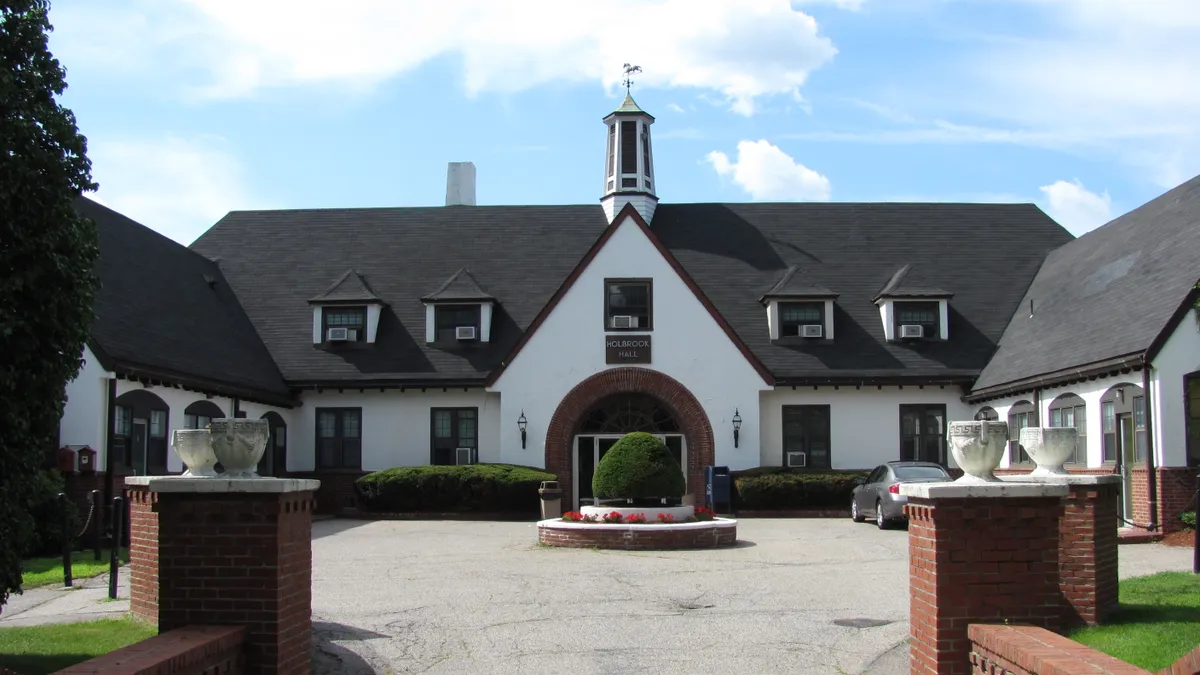Dive Brief:
- With enrollment and tuition revenue under pressure across the country, many colleges — especially small, private nonprofits — are under financial stress and could look to merge or face closure. Of those scenarios, closure is more likely given the difficulties in merging colleges, according to a report last week from credit ratings firm S&P Global.
- Chief among the challenges for merging colleges is aligning the interests of numerous powerful stakeholders, including boards, senior management, faculty groups, alumni and students. Moreover, the analysts said in the report, "Every school has a unique brand, culture, mission, and history — and can be very reluctant to give these up."
- That leaves closure as the more likely option for schools under severe financial distress, though mergers carry potential benefits, including expanded programs, geographic reach and enrollment base. The analysts anticipate closures and consolidation will continue throughout the industry, especially in the Northeast and Midwest, with small private colleges as "prime candidates" for this activity.
Dive Insight:
The backdrop of S&P's report is the challenging fiscal and market environment in which much of the higher ed world operates. The analysis found full-time-equivalent enrollment declined at 15% of private colleges and at 17% of public colleges for the three years between the fiscal years 2015 and 2017 as online education expanded and prospective students opted instead for employment in an accelerating job market.
Deep financial challenges have followed enrollment drop-offs, with 11% of private colleges experiencing net tuition revenue declines during the 2015-17 period, S&P analysts found. (The effect was much less pronounced for the public college sector, with 2% seeing tuition revenue declines during that period.)
These issues were more pronounced for smaller private colleges, measured as those with less than 1,400 full-time enrollees. Of that group, 28% saw net tuition revenue declines (triple the percentage of larger schools) and 21% experienced enrollment declines for the three years between 2015 and 2017. The group as a whole had an average tuition discount rate of 49% in fiscal 2017, according to S&P.
With declines in the rate of high school graduation in some states, the analysts said they "expect demand pressure to continue in the near term," with "significant declines" in enrollment already seen in the Northeast and Midwest. The tough operating environment in recent years has led to numerous closures across the higher ed field, and Fitch analysts said in a December report that closures could pick up this year.
Despite the difficulty — and occasional failures — noted in the S&P report, several colleges have merged successfully. The analysts noted National University's acquisition of Northcentral University, Purdue's purchase of Kaplan University and the merger of Berklee College of Music and Boston Conservatory in 2015, which they said "seems to be a successful example of two smaller schools integrating to make use of their adjacent locations and complement each other in terms of program offerings."
In a recent white paper, Virginia Sapiro, a political science professor at Boston University, noted more than 30 nonprofit colleges have closed or merged since 2015. Taking a historical view, she writes that spikes in closures are not new, "although this one is steeper than we have seen before" and is matched by record lows in new four-year and graduate institutions.
Sapiro also notes many of the small schools that have closed recently "lived close to the financial margin for a long time" and depended heavily on tuition dollars. She points out that a college's closure has ripple effects well beyond those directly involved with the institution. Housing markets and community identity are negatively impacted. Historic and "white elephant" buildings need repurposing. "The loss of institutions of higher learning is a serious matter," Sapiro wrote.










